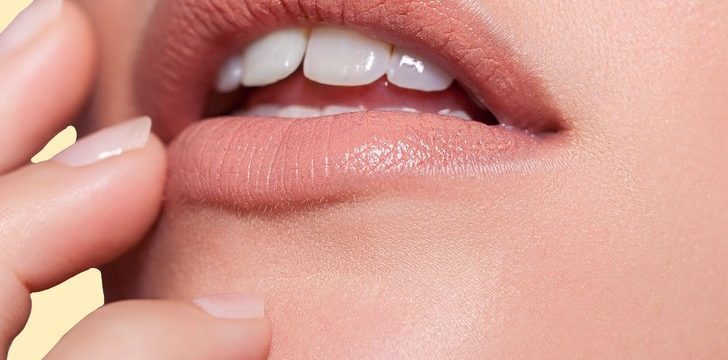
After an emergency extraction, you may think the worst is over. You know some pain is expected after a tooth is removed. But the next day you are still in pain. Is the pain you are experiencing normal, or do you have a dry socket? If so, is it a reason to go back to the dentist? We have the information you need to make that decision here!
What is a Dry Socket?
A socket is the gap left in the bone when an adult tooth is pulled. Healing occurs when the body form a blood clot to protect and provide the nutrients to the area that allow it to heal. When a socket is referred to as dry, it means this blood clot is no longer there. This exposes the bone to air and allows food particles and bacteria to enter and possibly cause a painful infection. While the percentage of dry sockets that occur after an extraction is low (2%), it jumps when the teeth that were removed are wisdom teeth (20%).
How do I Know if I Have a Dry Socket?
It takes 7-10 days for healing to occur after a tooth is pulled. Anytime during that period you are at risk of developing a dry socket, but usually it occurs between 2-4 days after. Most often pain is the biggest indicator to tell you there is a problem. The pain is usually on the same side as the tooth that was removed. It can radiate to the ear or eye as well. In addition to pain, there is an unpleasant taste in the mouth that is accompanied by bad breath. Sometimes a fever, nausea, or vomiting may be present. If you can look in your mouth and see white bone in the hole where the tooth was, you have a dry socket.
Do I Have To See a Dentist?
A dentist can accurately diagnose if you have a dry socket. It is important to seek help because healing is delayed the longer treatment is delayed. Your dentist will be able to make sure anything (food particles) that has become lodged in the socket is removed so infection doesn’t occur. They can also prescribe you an antibiotic to help with infection. The dentist will pack the wound with a medicated gauze to relieve pain and protect the area while the area mends.
An Ounce of Prevention…
The good news is that there are things you can do beforehand to prevent a dry socket. Listen to the instructions your dentist gives you. Taking it easy for a day or two will help that clot stay put. Avoid drinking through a straw as suction can disturb the clot. Eat soft foods. Avoid hot drinks like coffee and foods high in acid like soda and orange juice (can dissolve the clot). Women are more at risk than men because estrogen production can slow healing time. If you are taking an oral birth control pill, this will be something to discuss with your dentist as well. Finally, smoking is a huge risk factor for developing a dry socket. Try to avoid it in the early days of healing. After that, use caution inhaling a cigarette that you don’t include a sucking action.
While a dry socket is an unplanned event, at Emergency Dental, our convenient hours help treat your emergencies and get you on the road to recovery! Call us today!
Follow us on Facebook to keep up new posts! Check out our website to see the services we offer, payment plan information, our full list of blog articles, how to contact us, meet our staff, and read patient testimonials!

hızlı okuma kursu istanbul hizmetinizde
Thanks for the article. We, as istanbul hızlı okuma kursu, liked your article.
bu da bir denemedir loo
bir kaç gün içinde dön ne olur
Çocuklar ve bebekler olmazsa olmazdır. Sen çok yaşa anne karnında bebeğin titrer gibi hareket etmesi.
Güvenilir Bahis Ve Canli Casino Sitesi Pit10bet pit10bet giriş
Güvenilir casino siteleri alternatif siteleri inceleyin 2023 güvenilir casino siteleri
Güvenilir Bahis Ve Canli Casino Sitesi Pit10bet pit10bet giriş
"Güvenilir casino siteleri ararken,kesinlikle göz önünde bulundurmanız gereken bir seçenek. Bu platform, güvenilir casino siteleri arayanlar için mükemmel bir seçenek sunuyor. Hem canlı casino hem de klasik casino oyunları için geniş bir seçenek yelpazesi sunuyorlar." güvenilir casino siteleri
Kocaeli lastik servisi olarak acil yol yardım hizmetleri vermekteyiz. Her noktada yanınızda Teklas
Sürekli güncellenen ve en son gelişmeleri anlık olarak sunan platform, sizi dünyanın nabzıyla buluşturuyor. Son dakika haberlerini kaçırmamak için gamestity takip edin gamestity.com
Kocaeli İzmit’te yer alan ofisimizde, mimari projeleriniz için 3D tasarım, 3D modelleme ve danışmanlık hizmetleri vermekteyiz. Tasarımlarımızda Doğa, İnsan ve Teknoloji kavramlarını aynı anda Sibernetik olarak ele alıyoruz. Güçlü, konforlu, kullanılışlı ve estetik mimari tasarımlar için bizimle iletişime geçebilirsiniz.
Harika kaliteli yayın ve donma yok maclari burdan izleyin tavsiye ederim
Yubari kavunu yetistiriciligi, demlr hindiba yetistiriciligi, cins kedi yetistiriciligi
Experiencing persistent pain after a tooth extraction might indicate a dry socket. This condition occurs when the blood clot protecting the extraction site dislodges, exposing the bone and causing pain. If you suspect a dry socket, it’s essential to visit your dentist for proper diagnosis and treatment. They can clean the area, provide pain relief, and prescribe antibiotics if necessary. Following post-extraction care instructions can help prevent this painful complication.
Hi there, your site has great content do you know this? Thanks for this great content.